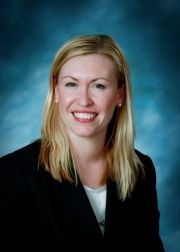Over the years, I have been fortunate enough to teach Nurse Practitioner (NP) students in both clinical and classroom settings. Teaching, especially regarding topics about which I am passionate, can be incredibly rewarding. However, I have found that doing so without training as an educator can also be tremendously challenging.
After graduating as a Doctor of Nursing Practice (DNP), I knew I wanted to take my teaching from the clinic into the classroom. I left my clinical position as a dermatology nurse practitioner (NP) and accepted a part-time Assistant Professor position at a nearby college. I could not have been more ecstatic to begin this new phase of my career, armed with all of the content I learned during my own education and practice. Unfortunately, I learned that knowing content does not necessarily translate to skill in teaching.
After teaching undergraduate and master’s-level students in clinical settings for several years as a hospitalist and then dermatology NP, my first time in a classroom was teaching research methods and statistics to a group of DNP students. Both are topics I love! Due to a lack of clarity surrounding the DNP degree, there is no unifying curriculum available. There simply was not enough guidance about what and how I should teach. So, as a brand-new faculty member, I had little idea what to do and almost no structure to fall back on.
I felt quite lost during that year of teaching, but I learned so much about what I did not know. In my educational experience, instructors lectured and students listened. With this in mind, I armed myself with PowerPoint presentations and the expectation that my students would arrive to class prepared, having completed the assigned readings, and ready to listen to me for hours on end. I endeavored to respect their valuable time and their intelligence by not being repetitive and by building into class protected time for them to work on their doctoral theses. As expected, my best laid plans went awry. My students had questions! And they wished for discussion and stimuli beyond my droning voice!
This realization led me to consider a degree in health professions education. Fortunately, I live in an area where there are multiple opportunities for advanced training in medical and health professions education. I am currently enrolled in the Harvard Medical School Masters in Medical Education Program, through which I am attending the Harvard Macy Institute Program for Educators in Health Professions. These programs have allowed me to view my previous teaching through a new lens. Using this new knowledge, I can see that I am better prepared to design and teach a course that will benefit my learners.
With just one year of classroom teaching experience, I still have more than enough fodder for reflection as I learn from the experts in medical education. I have learned a lot about adult learning theory (androgogy) and how it differs from pedagogy (child learning theory). It has enlightened me to the idea that my adult learners prefer and benefit from having input in the direction of their learning. I can see that while adult learners are comfortable with the traditional lecture-and-listen format, it is not the best way to teach or learn. I have learned that working in groups, specifically assigned groups, is a great way to teach so that your learners will learn, and I regret using all those PowerPoints in my lectures. Additionally, I have learned the impact that the seldom applied, but incredibly powerful, learning tool of frequent quizzing and testing can provide. Most importantly, I have learned the potential of reflection on learning regarding my own education, which has led me to utilize Twitter professionally and start writing my own blog. I find it useful to reflect upon the ways in which I prefer to learn, as it informs my teaching style. I am reminded that PowerPoints and lectures may make learners feel comfortable, but that active, engaged learned works better.
Did you know that the Harvard Macy Institute Community Blog has had more than 265 posts? Previous blog posts have explored topics including community building in the classroom by design, using learning sciences to enhance student learning and success, and what my former career as a pipefitter has taught me about medicine so far.
Danielle Raja

Danielle Raja, DNP, APRN-BC, DCNP, (Educators, ’21) is a Dermatology-Certified Nurse Practitioner. Danielle is currently a student in the Harvard Medical School Masters in Medical Education Program. Danielle’s areas of professional interest include interprofessional collaboration, statistics training in the health professions, and nursing education. Danielle can be followed on Twitter or LinkedIn.

